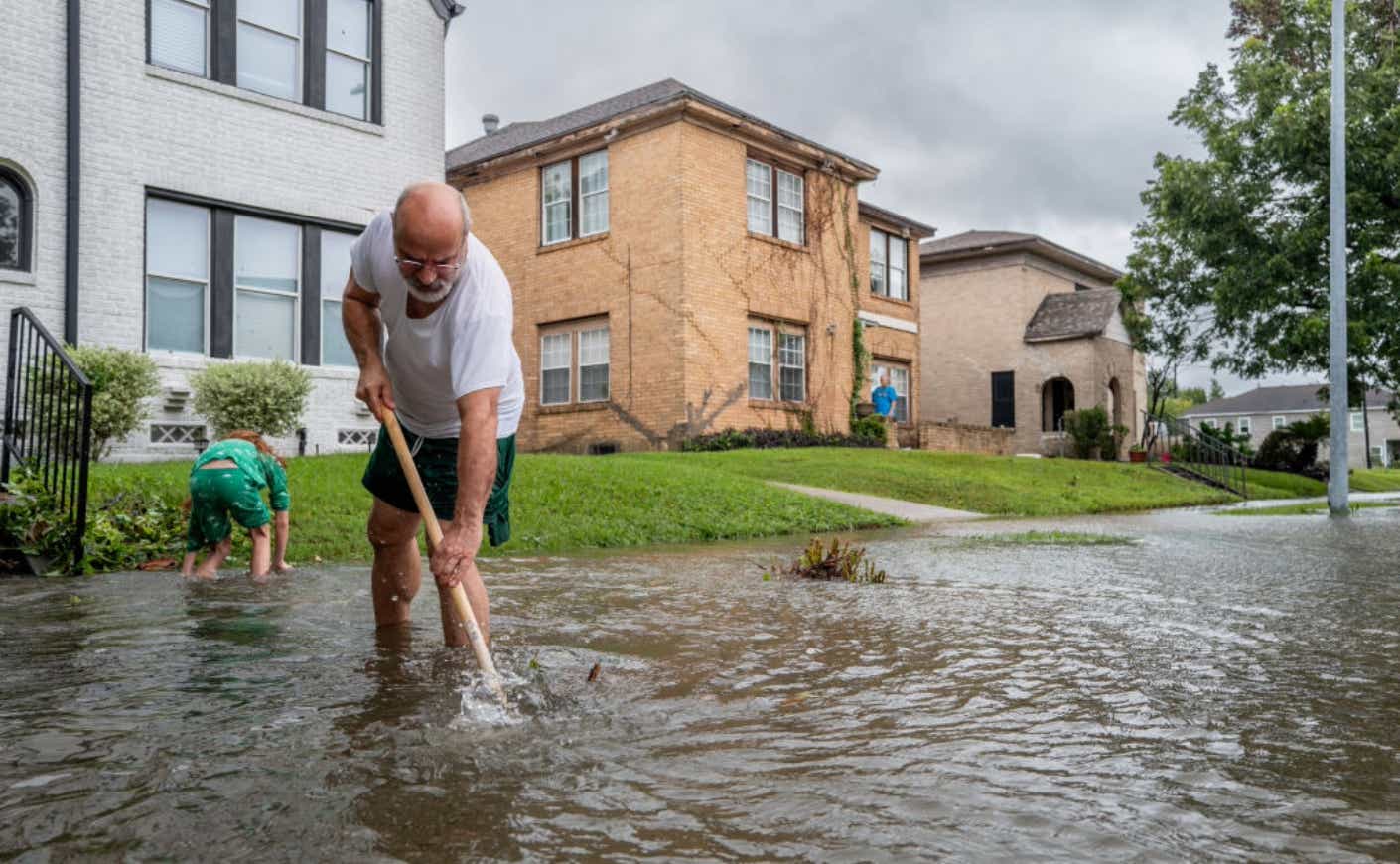The financial toll of climate change isn’t just theoretical — it’s hitting home, quite literally.
According to First Street, a climate research firm, weather-related disasters could drive a 380 percent surge in U.S. foreclosures over the next decade. By 2035, nearly one in three foreclosures could be linked to climate impacts like flooding and wind damage.
Who could be the hardest hit? First Street warns that moderate-income households are particularly vulnerable to severe weather damage. Since much of Americans’ wealth is tied up in their property values, this trend could lead to financial devastation for many families.
The fallout won’t stop with homeowners. As climate-driven foreclosures climb, lenders could face losses of $1.2 billion annually by this year, potentially soaring to $5.4 billion over the next decade as they absorb the cost of mortgage defaults.
But don’t assume this crisis will only affect coastal areas. Here’s a closer look at where climate-related foreclosures are expected to rise.
Where climate change could push foreclosure rates higher
According to First Street, U.S. communities most at risk for climate-related foreclosures in the coming years are typically densely populated, high-property-value areas with many underinsured homeowners, often located along the coasts.
Florida stands out as a prime example. It’s home to eight of the top 10 counties projected to face the highest credit losses from extreme weather. In particular, Duval County, which includes Jacksonville, could see up to $60 million in credit losses — caused by customers or borrowers failing to repay debts or loans — from 900 foreclosures during a severe weather year, based on CBS’s analysis of First Street’s data. And it’s not just the Southeast — further north, Ocean County, New Jersey, could see credit losses reaching $13 million.
California is also projected to face billions in losses across the state. San Bernardino County, for example, could incur up to $13 million in credit losses, while Sonoma County might see around $2 million. A similar trend is emerging in the South, where Harris County, Texas, which includes Houston, could face losses as high as $34 million.
What other parts of the country could see these consequences?
The financial fallout from climate change won’t stop at the coasts. Inland regions like the Mountain West and the Great Lakes are increasingly vulnerable to climate-related credit losses, too.
According to First Street Foundation, flooding is a key driver behind rising foreclosure rates in these areas, particularly where homeowners lack flood insurance and are more likely to default on their mortgages.
Unlike standard homeowners insurance, flood coverage isn’t broadly required. It’s mandated only for those with federally backed mortgages who live in FEMA’s designated Special Flood Hazard Areas. As of August 2023, just 3.1 million flood insurance policies were active under the National Flood Insurance Program. But the true scale of risk goes far beyond that; FEMA’s maps identify about 8 million properties in high-risk flood zones, yet First Street estimates nearly 18 million homes nationwide face substantial flood risk.
Why the gap? FEMA’s flood maps primarily account for river overflows and coastal storm surges, leaving out a major and growing threat: extreme rainfall. As climate change intensifies, so do rain-driven floods that can hit neighborhoods well beyond the official flood zones.
This insurance blind spot has costly consequences. First Street’s analysis of 29 flood events between 2002 and 2019 found that homes outside FEMA’s designated zones saw foreclosure rates 52 percent higher, on average, than those within the zones. It’s a jarring warning sign: Homeowners who think they’re safe, or aren’t required to carry flood insurance, may be most at risk.
How can homeowners protect themselves?
Unfortunately, FEMA’s flood maps aren’t likely to be updated anytime soon. The Association of State Floodplain Managers estimates it could cost up to $11.8 billion to complete new mapping — a price tag unlikely to be met, especially amid federal budget cuts across the board.
Given this, experts say the best step homeowners can take is to check whether they have flood insurance.
“If you don’t protect yourselves, then when the event does occur, it’s completely on you,” Jeremy Porter, head of climate implications at First Street, told CBS. “You end up having to pay out of pocket and you may go into foreclosure.”









